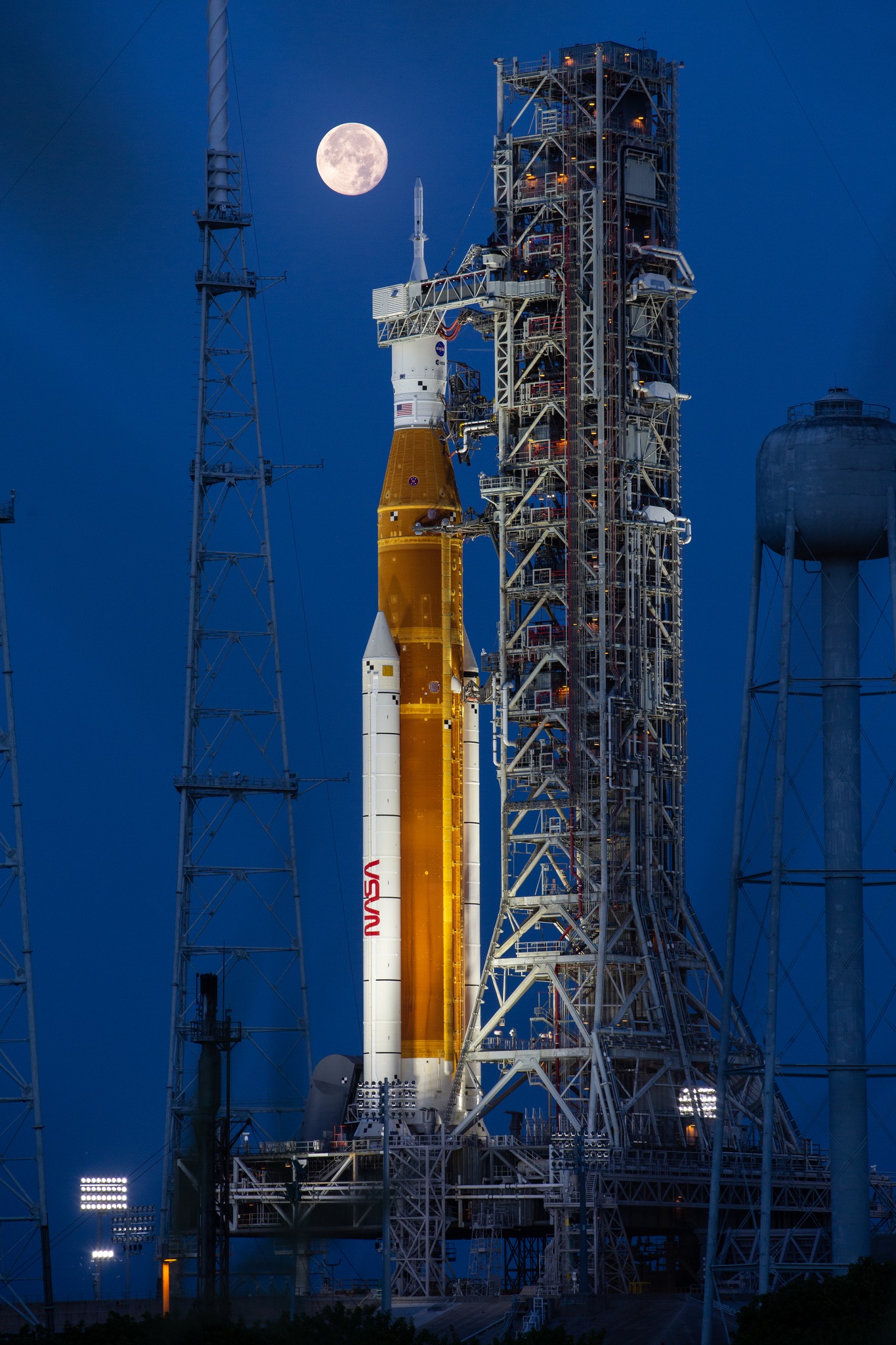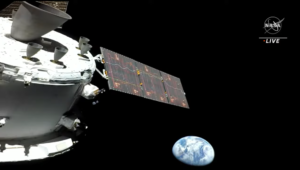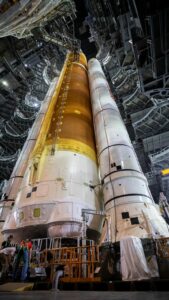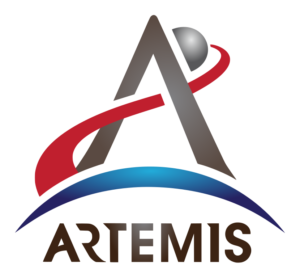We are going.
– NASA (@NASA) November 16, 2022
For the first time, the @NASA_SLS rocket and @NASA_Orion fly together. #Artemis I begins a new chapter in human lunar exploration. pic.twitter.com/vmC64Qgft9
After 50 years, we are on the first flight of the program that will take us back to the Moon! After final repairs during the launch countdown, the first SLS rocket took off carrying the Artemis I mission to the Moon. The live broadcast of the launch began at 22:30 EST November 15th, and the window was two hours long:
See how the launch went:
On August 29, the first launch attempt of the Artemis I mission took place, ending up scrubbed at T-40 minutes to investigate a temperature measurement in the exhaust of one of the engines. The SLS rocket continued on launch pad 39B at NASA’s Kennedy Space Center, until it had to be taken back to the protection of the assembly building (VAB) during Hurricane Ian. The next opportunity to launch is in the early hours of November 16, after delays due to hurricanes Ian and Nicole.
In the analysis of the data collected during Hurricane Nicole, the winds, although strong (gusts of up to 160 km/h at the height of the top of the rocket) never exceeded the operating limits. The operating limits were chosen at the level of 75% of the safety limit, leaving 25% margin. And the safety limit, in turn, is 70% of the vehicle’s structural limit, leaving a further 30% margin. There was only minor damage found, none of it structural, the most relevant being the loss of part of an RTL coating at the splice of the Orion coating with the service module, but the result of the analysis is that the effect (on drag and heating) should be small, as should the risk of other pieces coming loose and causing damage.
Find out more about these changes of plan in our article:
Why did it take so long to get back to the moon?
Since the Apollo era, there have been many proposals for other missions to the Moon, with very different scopes. The main problem has always been the same: very high costs and risks. The entire Apollo Program spent around 200 billion dollars (adjusted for inflation) and 3 lives were lost on Apollo I. The last 3 Apollo missions, for which preparation had already begun, Apollo 18, 19 and 20, were canceled by the government (Congress and the President, who decide what NASA does), due to the high cost and risk, having already made 6 successful landings on the Moon between Apollo 11 and 17 (13 had to return without landing on the Moon, due to an explosion on the way). The 1960s saw a conjunction of many political factors, including the Cold War and the Space Race with the Soviet Union, which was necessary to make a project of this magnitude of cost, innovation and risk possible.
After Apollo, the focus of the American manned program became low Earth orbit, with the Skylab space station (1973-1979), the Space Shuttle, which made 135 flights from 1981 to 2011 and the construction of the International Space Station, from 1998 to 2011 and its operation, which is expected to continue until around 2030. With the end of the Space Shuttle operation and the construction of the Space Station, there was room for more focus on new manned missions beyond low Earth orbit. With improvements in technology and through the reuse of elements from the Space Shuttle, at this time a new program for manned trips to the Moon and beyond began to become feasible. In 2005, the Constellation program began, which envisaged two new large rockets, Ares I and Ares V, and the Orion capsule, to carry crew on trips to the Moon and beyond. But political factors again hampered these goals and a 2009 analysis indicating that the program did not have enough funding to achieve its objectives led to the cancellation of Constellation. In 2010, it was decided to pursue the development of the SLS rocket in place of the Ares I and V and the continuation of the development of the Orion capsule, although it was still vague when and for what missions they would be used. It wasn’t until 2017, with the further development of the SLS and Orion, that it became feasible to establish a more concrete program for trips to the Moon, which is how the Artemis program originated.
What is the goal of the Artemis Program?
Instead of just quick visits, the Artemis Program includes building a space station orbiting the Moon and a permanent base on the surface, spending less and accepting less risk than the Apollo program, so that we can learn to live away from the Earth for a long time, which is essential for going to Mars.
Officially established as the Artemis Program in 2017, it will take the first people to the Moon since Apollo 17 in 1972. Unlike the Apollo missions, which were short trips with just two astronauts making quick visits to the Moon’s surface, Artemis is much more ambitious: the proposal currently has 11 Artemis missions, with trips lasting from 10 to 60 days, including the construction of a space station orbiting the Moon (Lunar Gateway, starting on Artemis III) and a base on the Moon’s surface, near the south pole, which would be visited repeatedly by astronauts from the Gateway, starting with Artemis VII. The first mission, due to be launched tomorrow, will be an unmanned test of all the equipment, the first flight of the SLS rocket and with the Orion capsule going to the Moon, orbiting it and returning. All missions from Artemis II onwards will be manned, with landings on the Moon from Artemis III onwards.
This prolonged human presence and repeated trips to the Moon will make it possible to develop and test the technologies needed to establish a permanent base on the Moon and for more distant and longer journeys, such as to Mars. This includes partially or completely reusable spacecraft for flights between the Moon’s orbit and the surface, refueling spacecraft in space, the use of resources (minerals and water) from the Moon’s surface, energy generation by nuclear power plants, communications, and growing plants for consumption. It will also test the system of contracting out various elements of the Artemis missions and several of the 24 support missions (not Artemis) to private companies (in addition to those that are international collaborations), which would develop their own means of delivering cargo to the Moon’s orbit or surface – both scientific support missions and crew supplies. There is a continuous evolution of the objectives over the decades: in 1950-1960 the objective was simply to reach space; in the 1960s, it was to reach the Moon; in 1970-2020 it was to maintain a prolonged human presence in space, in low Earth orbit, to develop technologies and procedures to keep humans alive and healthy in space. Now, the Artemis Program is the first step towards going further, establishing a human presence in places from which it is not possible to escape immediately to Earth in the event of an emergency, nor to count on a rescue mission coming quickly. Going to Mars directly, a journey of years, would be too great a leap (and therefore too risky and costly). The Moon offers an intermediate step, to learn how to keep humans isolated from the Earth for longer and longer periods, outside the radiation protection offered in low orbit by the Earth’s magnetosphere. That’s why this strategy is called “Moon to Mars“.
Artemis I

As Artemis I will use the new SLS rocket and the European Service Module for the first time, it will be a complete unmanned mission to the Moon’s orbit, remaining there for 1.5 orbits, returning with Orion and the service module and Orion re-entering and landing on Earth after 42 days. This will make it possible to test all the elements that will be used in the first manned mission, Artemis II.
As part of the tests, Orion will carry experiments to measure the amount of radiation reaching the inside of the capsule and a new vest to be used for radiation protection (AstroRad), using two mannequins equipped with internal sensors in the positions of the most sensitive vital organs – one mannequin with AstroRad, the other without, to measure the difference. In addition to the cargo inside Orion, Artemis I will also carry 10 cubesats with a variety of experiments from different institutions around the world:
- ArgoMoon (Argotec / Italian Space Agency – ASI): inspecting the exterior of the spacecraft.
- BioSentinel (NASA Ames): carrying fungi to examine the effect of radiation on long stays beyond low Earth orbit.
- CuSP (Southwest Research Institute): test for a space weather monitoring system (radiation and particles flux from the solar wind).
- EQUULEUS (Japan Space Exploration Agency – JAXA / University of Tokyo): mapping the radiation environment around the Earth and testing low-thrust maneuvers on trajectories to the Moon.
- Lunar IceCube (Morehead State University): mapping water ice on the Moon’s surface from a low orbit.
- LunaH-Map (Arizona State University): mapping the distribution of hydrogen compounds (such as water) from the Moon’s orbit.
- Near-Earth Asteroid Scout (NASA – Marshall, JPL, Johnson, Goddard and Langley centers): The first attempt to use a solar sail as propulsion, it will observe a small asteroid passing close to Earth (NEA – Near Earth Asteroid), as well as demonstrating the technology of a low-cost solar sail mission. The target asteroid, 2020 GE, is comparable in size (18 m in diameter) to the probe’s solar sail (14 m).
- OMOTENASHI (JAXA): a small probe to land on the Moon and monitor radiation in this environment.
- LunIR (Lockheed Martin): demonstration of technology for infrared observation of the Moon on a low-cost platform.
- Team Miles (Fluid and Reason): Demonstration of a low-cost platform with navigation, ion propulsion and communication systems in deep space.
Artemis I in flight
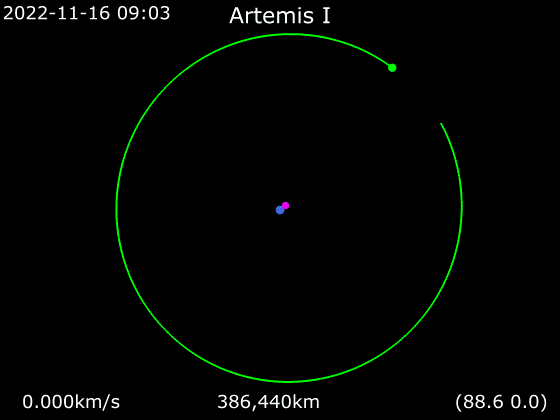
Until day 6 of the mission (November 22), Orion will be traveling towards its rendezvous with the Moon, when it will use the Moon’s gravity and the service module’s engine to enter a trajectory leading to its distant retrograde orbit (DRO) around the Moon, where it will arrive on day 10 of the mission and spend 6 days. Then, on the 16th, it will use the service module’s engine to leave the DRO, heading for a new pass close to the Moon, to once again use the Moon’s gravity and a burn of the service module’s engine to put itself on the trajectory back to Earth. It will arrive on Earth on day 26 of the mission (December 11), when the test that is the main objective of the mission will take place: re-entry into the Earth’s atmosphere, coming at translunar speed (11 km/s). This is the test for the heat shield and the re-entry trajectory into the atmosphere (which includes “bouncing” once, to reduce speed more gradually). The Orion capsule and its heat shield were tested in 2014, but as it was only a not-so-high orbit (because it was the maximum possible with the largest rocket available at the time, a Delta IV Heavy), the re-entry speed was lower, just 8.9 km/s. After re-entry, the capsule will parachute down to land in the ocean near San Diego, where it will be “fished out” by a Navy ship.

Who’s inside Orion?
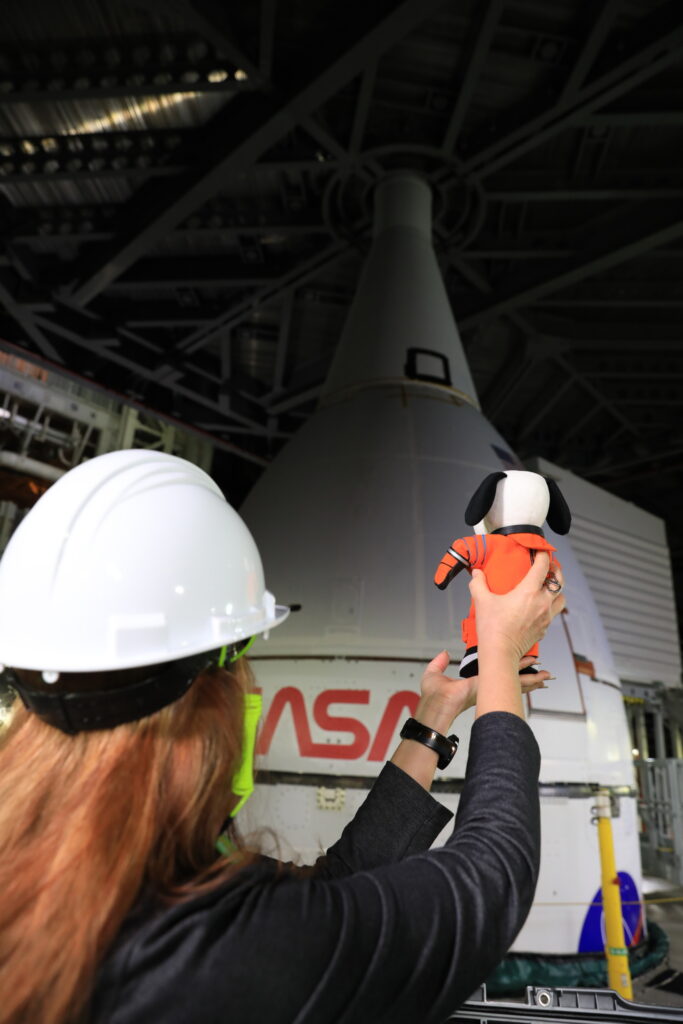
Astronaut Snoopy (NASA) 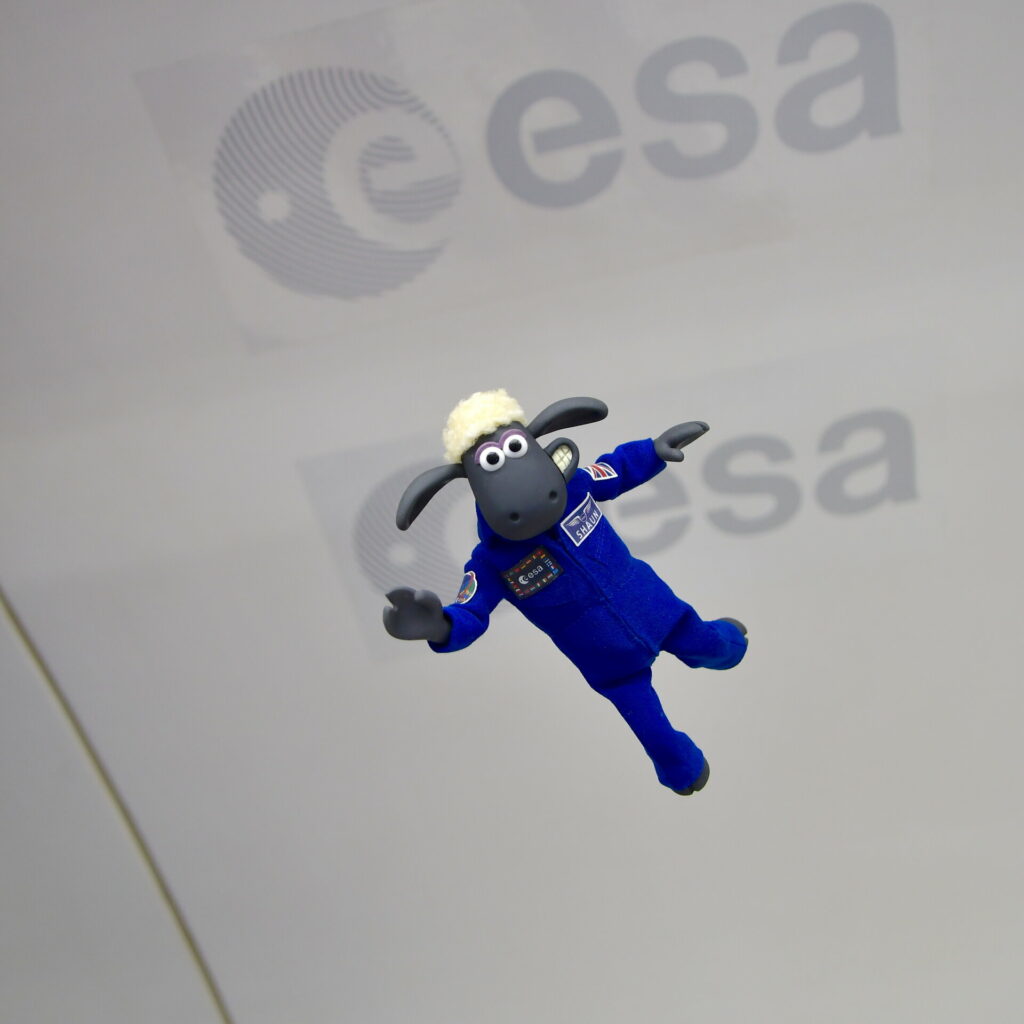
Astronaut Shaun The Sheep (ESA) 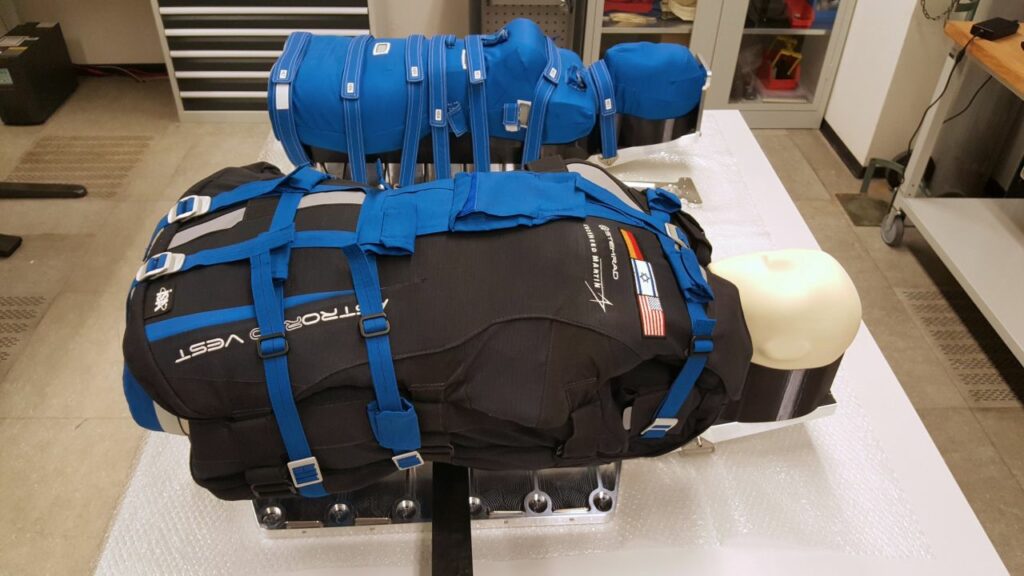
Helga and Zohar 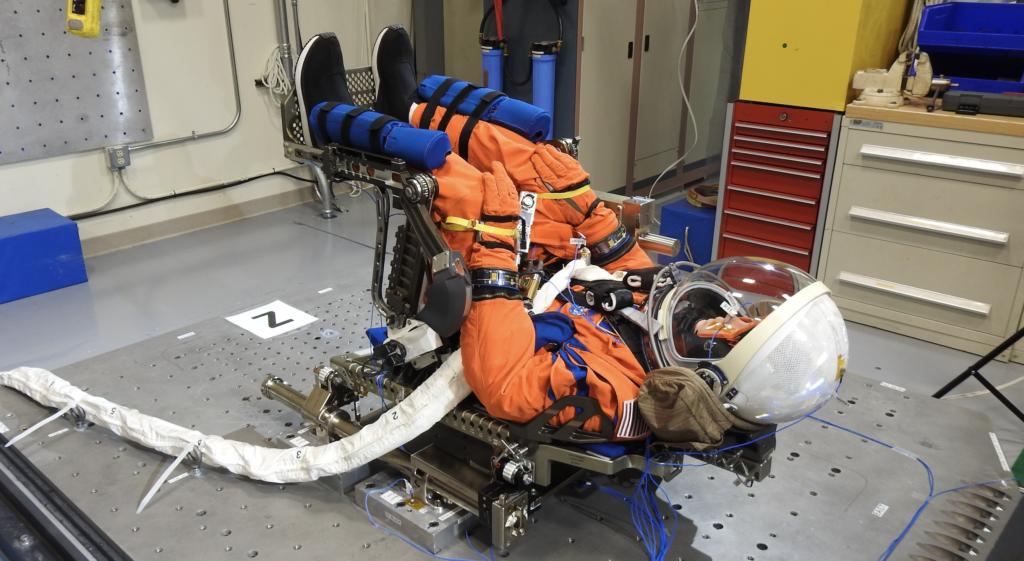
Moonikin Campos
Despite being an unmanned mission, Artemis has six passengers:
- Zero gravity indicators: Astronaut Snoopy (NASA) and Astronaut Shaun The Sheep (ESA). Traditionally, soft objects loose in the cabin are used to visually observe when the spacecraft is in zero gravity. For this mission, NASA chose an astronaut with decades of experience since the Apollo project, Snoopy. The Apollo 10 lunar module was officially named Snoopy, while the command and service module was called Charlie Brown. ESA sent the British Shaun The Sheep.
- Moonikin Campos: The mannequin with sensors used to test the suit (Orion Crew Survival System – OCSS), which will be used by astronauts to protect them during the riskier phases, being able to supply air and maintain pressurization, control temperature and supply fluids for consumption, being able to maintain an astronaut for up to 6 days if there is a loss of pressure in the cabin. The mannequin is named after Arturo Campos, an electrical systems engineer who worked on finding a way to save the astronauts on the Apollo 13 mission.
- Helga and Zohar: simpler mannequins (only torso and head), for an experiment to test a new radiation protection suit, AstroRad. One mannequin is without the AstroRad, the other is wearing it, which will allow measuring the difference, to find out what level of protection the garment has provided.
- Callisto: this one without a body is a cousin of Amazon’s Alexa. It is a system developed by Lockheed Martin, Amazon and Cisco to be a virtual assistant for the crew. There is also integration with a Cisco WebEx teleconferencing system.
What’s the ship like? Orion and SLS
The astronauts will travel in Orion capsules, which follow a similar concept to the Apollo missions:

The Orion spacecraft are larger, especially in terms of internal habitable volume (9m3, compared to 6m3 for the Apollo spacecraft), as computers and control systems now take up much less space. Together with the European Service Module, supplied by the European Space Agency (ESA), they can carry up to 6 astronauts (Apollo carried 3 and the modified version for the Skylab station could carry up to 5).
To carry Orion to the Moon, the new large rocket developed by NASA, the Space Launch System (SLS), will be used. The SLS will be one of the largest rockets in history (we won’t discuss where it stands in a ranking, as there are different metrics that lead to different results and this difference is not relevant here). It was developed in 2010 to enable NASA missions beyond low Earth orbit – manned missions to the Moon and Mars and large unmanned interplanetary vehicles. Making use of technology developed for the Space Shuttle program, including reusing many elements that have already flown with the Space Shuttles, the SLS closely resembles the appearance of the Space Shuttle stack, without the orbiter attached to the side.

Find out more about the SLS in our article on it:
Lunar Gateway and lunar bases

But the biggest difference in capability between Artemis and Apollo is not in the capsule or what is carried on a rocket flight. It lies in the use of multiple missions, only some of which are Artemis / SLS, to carry equipment to remain in orbit and on the surface of the Moon: the Lunar Gateway space station, orbiting the Moon, and the various modules to be left on the surface, forming the lunar base. In this way, the Orion capsule will only be a small transport for the crew to reach much larger and more capable facilities on the Moon – just as the current capsules used to go to the International Space Station (Soyuz, Dragon and Starliner) are only small transports to take the crew to the facility that is their destination.

Astronauts will arrive at the Gateway using the Orion capsule. The Gateway will have living and working space, supplies for the astronauts and will be the platform where the vehicle that will take them to the surface of the Moon, the Human Landing System (HLS), will dock. With the HLS, which should be at least partially reusable, astronauts will be able to descend to the base to be built on the Moon’s surface.

Initially, the elements of the base will be a large fixed habitable module, the Foundational Surface Habitat, a large mobile habitable module, the Mobile Habitat, and various support equipment, including unmanned rovers to explore the region remotely, an open vehicle to carry the exposed astronauts (unlike the Mobile Habitat, which will be pressurized), a nuclear power plant, communications equipment and other scientific experiments. So, unlike the Apollo missions, Artemis won’t have to carry all the equipment on each trip. There will be a site in orbit and a site on the surface where facilities and more equipment will be accumulated, gradually growing with each new Artemis mission and unmanned support mission delivering cargo. Just as the International Space Station has gradually grown into a large permanent facility, containing much more habitable space and equipment than it is possible to carry on individual flights that have to take everything at once.
Landing sites
On August 19, 2022, the 13 sites selected as candidates for the Artemis III landing were announced. All of them are close to the south pole, close enough to places in permanent shadow (which can therefore contain water ice and other volatile materials) for astronauts to reach them on foot, but far enough away so that the landings don’t contaminate them. They also need to be out of permanent shade in order to have access to solar power. Over the next few years, more detailed analyses will make it possible to narrow down the list of candidates.

Find out more at
How the launch went:
Our article on the SLS rocket:
Our article on the first two launch attempts and what a scrub means:
Our article on the Artemis Program
Live broadcast of the launch (starting August 29, 05:30 EST):
Official website: https://www.nasa.gov/specials/artemis/
Artemis’ official blog: https://blogs.nasa.gov/artemis/
This post is also available in:
Português
